HACK AN AIR "FRESHENER".
Take a cheap stinky plug-in air "freshener" and make it illuminate brightly and/or fill it with nice natural oils instead of the cheap chemical stinky stuff that comes with it.
This project involves meddling with mains voltage and/or the use of volatile oils at elevated temperatures, and is therefore probably really dangerous. But then, you wouldn't really expect anything less on this site would you?
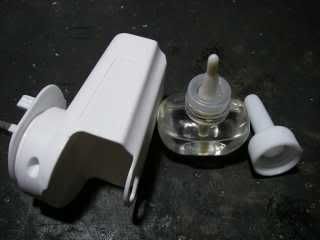
Here's the plug-in aroma plug as it comes. It's a typical cheapo from the local pound shop (dollar store). It comes complete with some sort of stinky chemical odour of dubious origin.
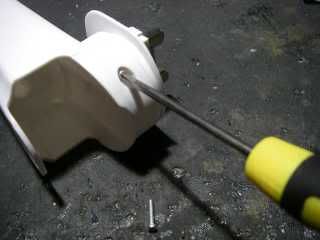
We start by opening the unit by removing the screws that hold it together. If possible, make sure your unit actually has screws before you buy it. Some of the units (notably the expensive brands) use melted plastic pins to lock them shut and they are not suitable for hacking.
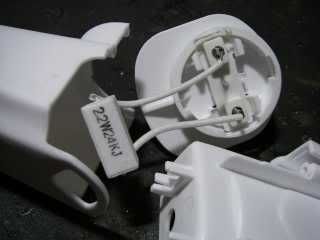
Inside is nothing more than a ceramic resistor connected directly across the mains supply. In the UK the value of this resistor is typically 24K (24000 ohms) which passes about 10mA and dissipates about 2.4W of heat to evaporate the aroma oil from the plastic wick. In the USA or other 110V countries the resistor is more likely to be around 5K (5000 ohms) and pass about 20mA to get the same heat output.

Here's the before amd after schematic of the very simple hack. Since the resistor is limiting the current to 10mA (20mA for the USA) we can simply put LEDs in series with it.
Because it's AC the mains polarity is changing continually, so we can't just use a single LED since it would strobe and would also have its reverse voltage exceeded on each half cycle. We could use an ordinary diode in inverse parallel to protect against the reverse voltage, but that would result in severe flicker (just like some expensive commercial units!). We could also use a bridge rectifier with the LED connected between + and -, but it's so much easier to just use two LEDs in inverse parallel so that they light up on alternate halves of the AC.
This also lets us get a wider variety of colours by mixing two LED colours like red and blue for a purple colour. It also gives a weird psychedelic effect because the colours alternate very fast!

To install the LEDs we first ascertain where there is room to fit them. There was plenty of room behind the neck of the aroma bottle in this case. It was also a convenient area well clear of the mains connections in the plug assembly.
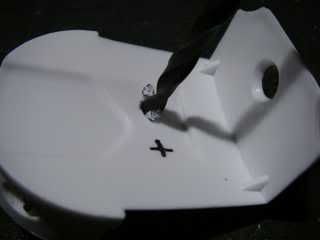
Mark and drill holes for the LEDs of a suitable size to allow a firm friction fit to hold them in place. If required you can experiment with drill sizes on a similar plastic. I found that a 5mm drill bit was ideal.
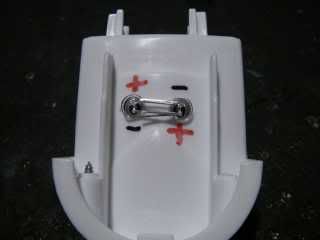
You may wish to mark the reversed polarity of the two LEDs before you press them in and crop and bend their leads down so they can be connected in inverse parallel.
I used two warm-white LEDs in this instance, but you could use any colour or two different colours like blue and green to create a turquoise colour.
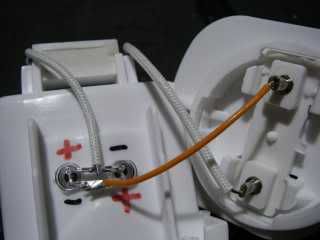
The LEDs are then soldered in series with one of the resistor leads and the mains connection it was originally connected to.
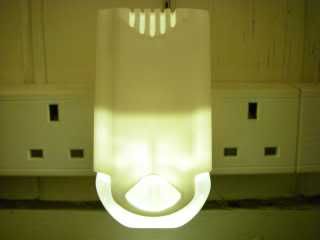
The plug is reassembled taking suitable care to make sure everything locks together properly and that the wiring is secure inside.
Then plug it in and admire your glowing creation.

If desired you can replace the chemical aroma supplied in these plugs by carefully prising the top off the plastic aroma bottle. Keep in mind that the packaging generally recommends avoiding skin contact to avoid the risk of skin irritation. The manufacturer doesn't seem to think that breathing the stuff into your lungs is a problem though!
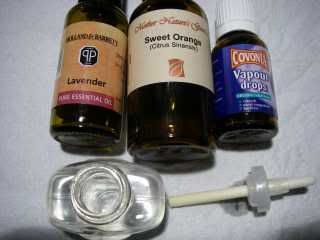
Empty the original oil out and rinse the bottle and wick with isopropyl alcohol or methylated spirits to get rid of as much as possible. Then refill with a more natural aroma oil like the orange, lavender or inhalant oils shown. Make sure you don't use a highly flammable oil though, since it is going to be heated to evaporate it.
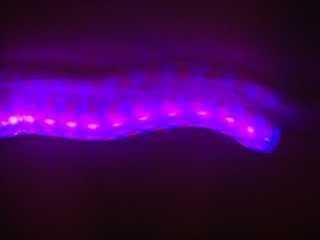
When two different colours of LEDs are used like the red and blue in this picture, they alternate rapidly at the mains frequency. Normally the colours just blend together, but when you glance across at the light the colours seperate out into bands, which I've tried to show by swiping the camera past as I took the picture.
It's actually a really cool psychedelic effect.